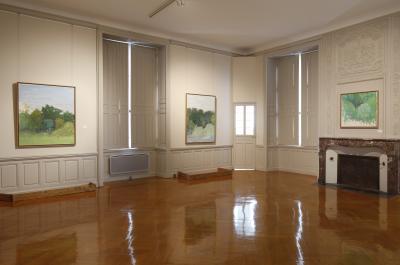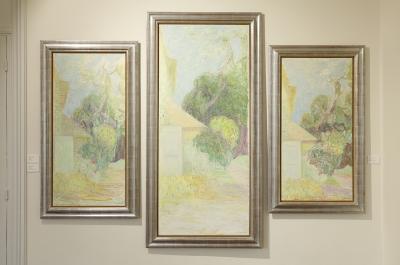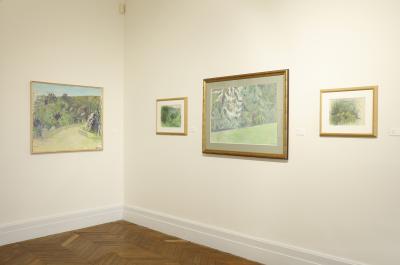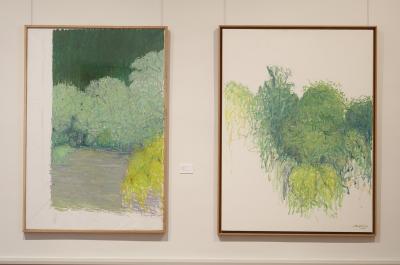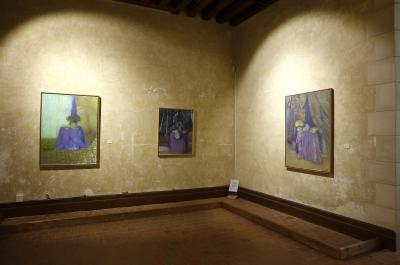Château
A. Jacques Truphémus
"Paysages", tribute exhibition
published at 12/02/2018
Jacques Truphémus, whom Balthus regarded as the greatest French painter, passed away in September 2017. He was a painter-poet, considered an heir of Bonnard, revealing a world, a nature we have grown incapable of seeing but the depth and wonder of which he masterfully brought to the surface.

Exalting light and colour, his canvases shimmer with imperceptible and fascinating light vibrations. At Chaumont-sur-Loire we will be presenting his landscapes and nature scenes, and who could describe the light and colour at the heart of this sensitive and entrancing work better than Yves Bonnefoy?
“Preserving a relationship of mutual transparency that may have existed between beings, things, great aspects of the world, and he or she who recalls it, this most secret memory specifically contains a light. That produced by this transparency, classification of relationships down to the deepest sentiments, desires, when it rises back up towards places, bodies and faces. And this inner light, this treasure of the memory, this transmutation carried out by the only true alchemy – it really exists, and we can even check this for ourselves: for this is what certain painters bear witness to directly, their subjects evidently infused with a light coming not so much from the world outside as it is an elaboration of their eyes. This proves that they have experienced it in a past preserved in their memory.” Y. Bonnefoy
“The omnipresent light is the most remarkable aspect of Truphémus’ paintings. Light with no point of origin, no care for shadows cast, no exercise of the powers it would wield in space, no time or seasons but which, from within, seems to emanate out of all things and all beings.” Y. Bonnefoy
“Quite unique is Truphémus’ colour, for it benefits from the transmutation that I have just endeavoured to describe. […] Light is the colour in many of Truphémus’ canvases, as clear as a voice can be clear: it has been delivered.”
“More than the harmony in the colours that Truphémus combines, I should like to talk about their friendship, about the friendly recognition each extends to the other, about their mutual assistance in preserving the fullness in the being in the world, on which cares weigh down at times, in other words a complicity which their friend, the painter, knows how to nurture in them, without rushing them.”
“These trees, this grass, this blue mountain which rises up behind the tree and the meadow when, of a morning, the painter opens a window of his house, what do they say to him, indeed, what do they confirm? That at times we are bathed in this light, which is not the same at dawn or the evening, as if to give expression to living, to flowering, in the movement of bees, yes, that everywhere here or elsewhere, yesterday or tomorrow, life evidently passes away but also returns, and this also applies to this lonely painter.”
“The painting of Jacques Truphémus’ attests to the primacy of the affection associated with beings on the matter which seems to betray them. It restores to a major endangered art form – painting and poetry in a single glance, a single breath – the requirement that is in fact the guarantee of its future.”
BIOGRAPHICAL NOTES
Jacques TRUPHÉMUS
FRANCE
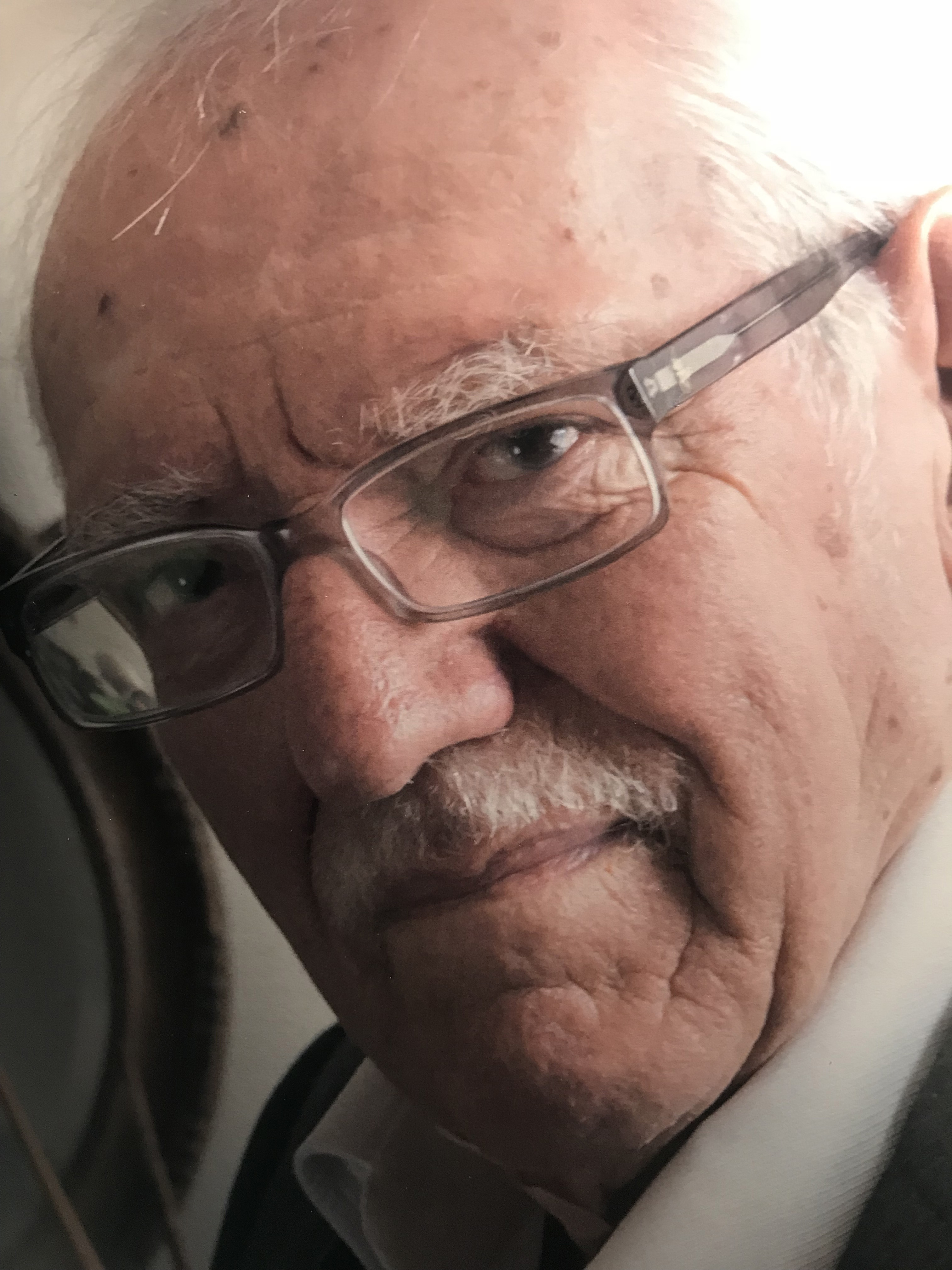
Jacques Truphémus was born in Grenoble in 1922.
1934-40
Studies at Lycée Champollion, Grenoble.
1937
First oil paintings: landscapes and still lifes.
1941
He enrols at Lyons’ School of Fine Arts with Chancrin, Laplace, Chartres and Vieilly as his teachers.
1943-45
The war and illness force him to interrupt his studies.
1945-46
He is back in Antoine Chartres’ painting class with his friends Cottavoz, Fusaro, Philibert Charrin, Hélène Mouriquand and Coquet.
1947
He moves to Paris, where he works as a night-watchman and studies drawing at the Grande Chaumière. He exhibits at the first Salon for under 30-year-olds along with Cottavoz, Bernard Buffet, etc. He also exhibits at the Salon du Sud-Est in Lyon.
1949
He returns to Lyon, where he exhibits alongside painter friends including Cottavoz, Fusaro and Charrin at the so-called “Salon du Sansisme”, held in Lycée Ampère’s chapel.
1950
Marries Aimée Laurens in December.
1952
Travelling exhibition in Sarre, sponsored by Art magazine.
1955
Meets his first admirers and the critic Marius Mermillon. He takes over the studio previously occupied by the painter Etienne Morillon and the painter Servant before him.
1956
Several canvases are on loan at the Monique de Groote Gallery in Paris and in Brussels.
1956-58
One of his canvases is acquired by the Geneva Museum in Switzerland.
1957
Stay and exhibition at the Palais de la Méditerranée in Nice. Purchase of his painting Personnages au Bord de la Mer (Figures at the Seaside) in Paris.
1958
Meets Dr Miguet, a true friend to painters, who find hospitality and encouragement at his house at Les Granges de Servette (in Douvaine, Haute-Savoie), which is often turned into an exhibition venue.
1959
M. Laurens purchases a painting for the Annecy Museum. Signature of an exclusivity contract with the Romanet Gallery in Paris. The State purchases his painting Le Rhône, on loan to the Saint-Etienne Museum.
1970
Travels to Japan, visiting Tokyo, Kyoto and Osaka.
1974
Publication of his travel journal Croquis du Japon (Sketches of Japan), by Roth & Sauter, À l’Enseigne du Verseau, Lausanne, Switzerland. 20-minute film shot in his studio in the form of an interview with Louis Calaferte.
1979
Two canvases purchased by the Lyon Museum.
1985
His close friend Dr Jacques Miguet dies.
1988
Filmed interview with Jean-Jacques Lerrant, directed by Alain Vollerin, Lyon, Arts Plastiques.
1991
Silex, poems by Louis Calaferte illustrated by Truphémus, published by Les Sillons du Temps
1993
Jacques Truphémus, film directed by M. Van Zele.
2000
His wife Aimée dies in January.
2001
Publication of Communion d’Esthètes (Communion of Aesthetes), by Denis Lafay and Jean-Pierre Groboz.
2003
Donates Consommateurs dans un Café (Customers in a Café), a work by his friend Henri Lachièze-Rey, to the Paul Dini Museum.
2004-2005
Retroprospective of Jacques Truphémus’ body of work at the Paul Dini Municipal Museum in Villefranche-sur-Saône. Les Trois Lumières de Truphémus (Truphémus’ Three Lights), film directed by Georges Combe and Jean-Jacques Lerrant.
2006
Jacques Truphémus illustrates the cover of Jacques Chauviré’s Massacre en Septembre, published by Le Temps qu’Il Fait.
2009
Inauguration of Place Jacques Truphémus in Mornant.
2011
Publication of the monograph Jacques Truphémus, RH Editions. Text by Yves Bonnefoy and Denis Lafay.
2014
Exhibition: Jacques Truphémus, Tous les Blancs Possibles, (All Possible Shades of White), Saint-Claude, Abbey Museum / donations Guy Bardone and René Genis.
2015
Exhibition: Jacques Truphémus, Claude Bernard Gallery, Paris.
2016
Exhibition at the Claude Bernard Gallery.
2017
Jacques Truphémus dies at the age of 95.
